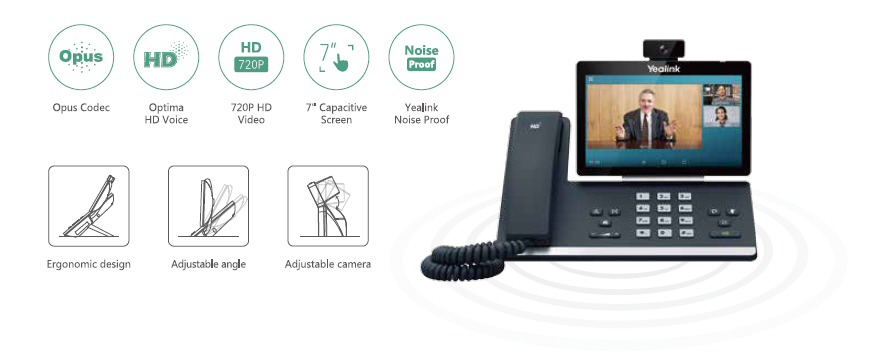Introduction: The Evolving Landscape of Business Communications
In an era where communication forms the backbone of any successful enterprise, understanding the shifting dynamics of business telecommunications is paramount. As technology continues to advance at breakneck speed, organizations find themselves navigating a labyrinth of options that promise enhanced connectivity and security. This article will delve into the top trends shaping the future of secure business telecommunications, illuminating how these innovations not only improve operational efficiency but also fortify security protocols essential for protecting sensitive information.
Why Secure Business Telecommunications Matter
The significance of secure business telecommunications cannot be overstated. With cyber threats becoming increasingly sophisticated, companies must adopt a robust communication framework that ensures both internal and external communications are safeguarded against potential breaches. The integration of secure voice services, encrypted messaging apps, and reliable video conferencing tools allows businesses to operate confidently in a digital landscape fraught with risks.
Top Trends Shaping the Future of Secure Business Telecommunications
1. The Rise of Cloud-Based Phone Systems
Cloud technology has revolutionized traditional business phone systems by offering flexibility and scalability. Organizations can now leverage cloud-based solutions that provide advanced features such as call routing, voicemail to email, and real-time analytics without the need for extensive hardware investments.
Benefits of Cloud-Based Phone Systems
- Scalability: Businesses can easily add or remove lines based on their needs. Cost-Effectiveness: Reduced overhead costs associated with physical infrastructure. Accessibility: Employees can access communication tools from anywhere with an internet connection.
2. Artificial Intelligence in Telecommunications
As artificial intelligence (AI) becomes more integrated into business processes, its role in telecommunications is expanding rapidly. business phone systems AI can enhance customer service through chatbots and virtual assistants that handle routine inquiries, freeing human agents to tackle more complex issues.
AI Applications in Secure Communications
- Predictive Analytics: Anticipating customer needs based on historical data. Fraud Detection: Identifying unusual patterns in call behaviors to mitigate fraud risks. Personalization: Tailoring communications to specific customer preferences.
3. Enhanced Security Protocols
With mounting concerns regarding data breaches and cyberattacks, businesses are prioritizing enhanced security protocols within their communication infrastructures. Employing end-to-end encryption, multi-factor authentication, and regular security audits is becoming standard practice.
Key Security Measures
- End-to-End Encryption: Ensures that only intended recipients can access the content. Multi-Factor Authentication (MFA): Adds an extra layer of security by requiring multiple forms of verification before granting access. Regular Security Audits: Identifies vulnerabilities within existing systems.
4. Unified Communications as a Service (UCaaS)
Unified Communications as a Service (UCaaS) provides businesses with an all-in-one solution for voice calls, video conferencing, messaging, and collaboration tools. This consolidated approach not only streamlines operations but also enhances security by centralizing communication channels.
Advantages of UCaaS
- Seamless Integration: Combines various communication methods into one platform. Improved Collaboration: Facilitates real-time collaboration among team members regardless of location.
5. Remote Work Solutions
The global shift towards remote work has led companies to seek solutions that enable effective communication across dispersed teams. Secure business telecommunications play a crucial role in maintaining productivity while ensuring data protection.
Tools for Remote Communication
- Video conferencing platforms like Zoom and Microsoft Teams. Secure messaging applications such as Slack or Signal.
FAQs About Secure Business Telecommunications
1. What are the main benefits of secure business telecommunications?
Secure business telecommunications enhance data protection, improve compliance with regulations, support remote work capabilities, and boost overall productivity within organizations.

2. How does cloud technology improve business communications?
Cloud technology allows businesses to access advanced telecommunication features without heavy infrastructure investments while offering scalability based on changing organizational needs.
3. What role does AI play in enhancing security?
AI helps detect anomalies in communication patterns that may indicate fraud or suspicious top rated business phone systems activity, allowing organizations to respond quickly to potential threats.
4. Why is multi-factor authentication important?
Multi-factor authentication adds an additional layer of security beyond just passwords, making it harder for unauthorized users to gain access to sensitive information.
5. How does UCaaS benefit remote teams?
UCaaS offers integrated tools that allow remote teams to communicate effectively through voice calls, video meetings, and instant messaging all from one platform.
6. What should businesses consider when choosing a telecommunications provider?
Businesses should look for providers that offer robust security measures, flexible plans tailored to their needs, high-quality customer support, and comprehensive features that promote collaboration.
Conclusion: Embracing Change in Business Telecommunications
As we venture deeper into our digital-first world, embracing trends such as cloud-based systems and unified communications becomes vital for organizations aiming to thrive amidst evolving challenges. The future of secure business telecommunications is bright—marked by innovation that not only enhances connectivity but also safeguards critical information assets from emerging threats.
In summary, adapting your organization’s communications strategy by implementing these top trends will ensure you remain ahead in this competitive landscape while prioritizing your company’s integrity and security. Embrace change today; the future awaits!